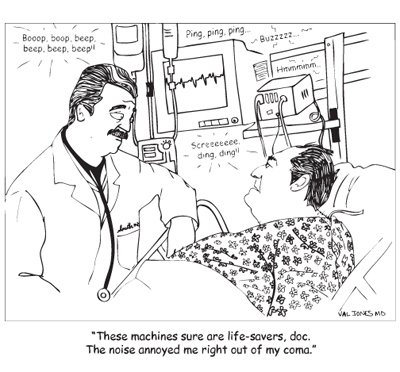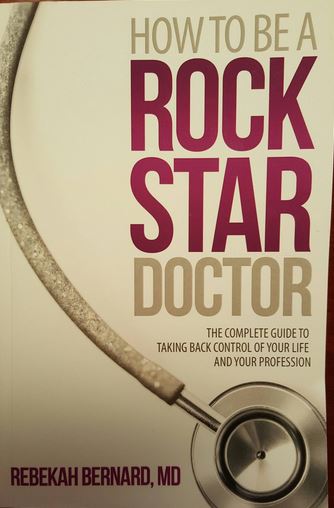January 28th, 2011 by DrWes in Better Health Network, Opinion
No Comments »

 You know it’s bad when the attending surgeon has to write this at the beginning of his operative note:
You know it’s bad when the attending surgeon has to write this at the beginning of his operative note:
“I certify that the services for which payment is claimed were medically necessary and that no qualified resident was available to perform the services.”
So there you have it.
-WesMusings of a cardiologist and cardiac electrophysiologist.
*This blog post was originally published at Dr. Wes*
January 15th, 2011 by DrWes in Health Policy, Opinion
No Comments »

 From CBS News:
From CBS News:
President Obama is planning to hand the U.S. Commerce Department authority over a forthcoming cybersecurity effort to create an Internet ID for Americans, a White House official said here today.
It’s “the absolute perfect spot in the U.S. government” to centralize efforts toward creating an “identity ecosystem” for the Internet, White House Cybersecurity Coordinator Howard Schmidt said.
That news, first reported by CNET, effectively pushes the department to the forefront of the issue, beating out other potential candidates including the National Security Agency and the Department of Homeland Security. The move also is likely to please privacy and civil liberties groups that have raised concerns in the past over the dual roles of police and intelligence agencies.
No, they’re not talking about a national ID card, just an international internet ID. The announcement came at an event today at the Stanford Institute for Economic Policy Research, where U.S. Commerce Secretary Gary Locke and Schmidt spoke. The Obama administration is currently drafting what it’s calling the National Strategy for Trusted Identities in Cyberspace, which Locke said will be released by the president in the next few months. (An early version was publicly released last summer.)
“We are not talking about a national ID card,” Locke said at the Stanford event. “We are not talking about a government-controlled system. What we are talking about is enhancing online security and privacy and reducing and perhaps even eliminating the need to memorize a dozen passwords, through creation and use of more trusted digital identities.”
Imagine: Anyone registered with such a cyber-ID who conferences with their doctor via a “secure server” can also be tracked by the government with such a mechanism. And the issue of not needing more than one password? While convenient, the ramifications of multiple accounts being compromised if a data leak were to occur remains with such a mechanism. Read more »
*This blog post was originally published at Dr. Wes*
January 8th, 2011 by DrWes in Better Health Network, Health Tips, Humor, Opinion
No Comments »

This comment [with a specific photo] was posted on my blog earlier:
“I was reading one of your old posts about magnets and I was wondering if a magnetic front closure on a bra would be a problem? There’s a warning on the label but I know part of that is just due to liability. What about this bra that has a magnet clasp on the front? If the magnet hits right in between the breasts would it be close enough to the device that it could interfere? Also does having a magnet that close change the settings or turn off a defibrillator/pacemaker early? I’m sure most doctors would say just wear another bra but this bra in particular is very comfy! I’ve tried it on but not worn it for extended periods of time. Luckily this is one of the only major complaints I’ve had about having heart disease and a [medical] device at such a young age.”
First, let me say thank you for asking this question. Who knew research could be so, er, entertaining! Second, this question reinforces why medical blogging is so great: You learn something new every day.
Now, as I slap myself back to a bit more professional stance, I’ll summarize by saying I think you’ll be okay to use such a bra with some precautions. Given the picture and the clasp’s location, this bra is more likely to interfere with the pacemaker of the partner you hug rather than yourself, provided your pacemaker was implanted over three centimeters from the magnetic clasp. Since most pacemakers and defibrillators are implanted just below the collar bone, the chance of the magenetic clasp to interfere with your device is remote. Read more »
*This blog post was originally published at Dr. Wes*
December 19th, 2010 by DrWes in Opinion
No Comments »

The consolidation of physician specialty practices into larger corporate healthcare systems in urban areas is creating a new challenge for today’s doctors when the music stops: There might not be a chair available.
There are simply many fewer hospital systems in large urban areas than there are specialy practices, so the number of specialist positions a large healthcare system is willing to absorb might be limited. As doctors and hospital systems coalesce into as-yet-to-be-clearly-defined “accountable care organizations,” the cost of too many specialists in an organization is being carefully weighed. Read more »
*This blog post was originally published at Dr. Wes*
December 16th, 2010 by DrWes in Better Health Network, News, Opinion
No Comments »

In a desperate attempt to reach an even number it seems, hospital defibrillators were added to ECRI.org’s “Top 10 Health Technology Hazards” list of devices that threaten to kill or maim patients:
The Top 10 Health Technology Hazards list is updated each year based upon the prevalence and severity of incidents reported to ECRI Institute by healthcare facilities nationwide; information found in the Institute’s medical device problem reporting databases; and the judgment, analysis, and expertise of the organization’s multidisciplinary staff. Many of the items on this year’s list are well-recognized hazards with numerous reported incidents over the years.
If one honestly looks at the number of lives saved versus the number of deaths from defibrillators, I wonder how many of this highly-esteemed group of “multidisciplinary staff” of the ECRI might reconsider. Clearly, most of them have never been in a code situation.
– WesMusings of a cardiologist and cardiac electrophysiologist.
Hat tip: Wall Street Journal Health Blog
*This blog post was originally published at Dr. Wes*
You know it’s bad when the attending surgeon has to write this at the beginning of his operative note:












